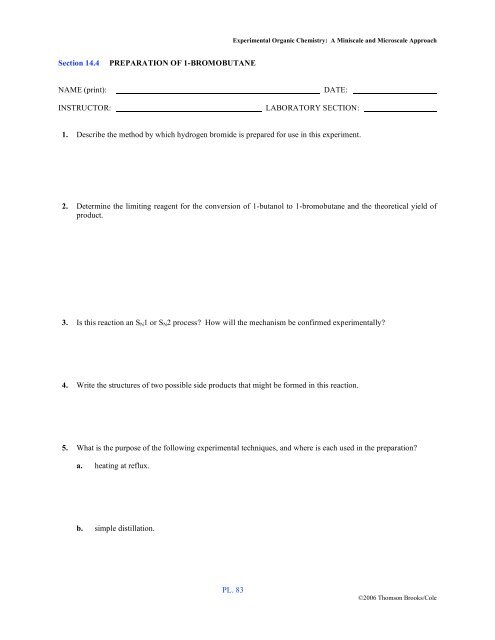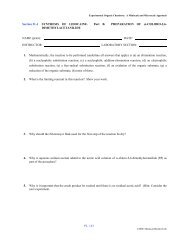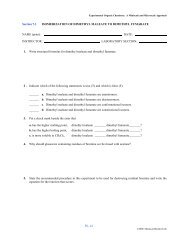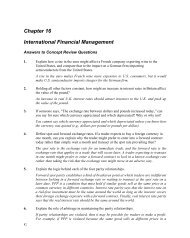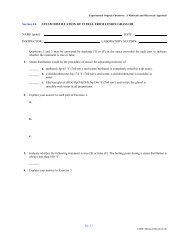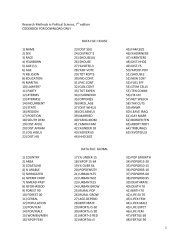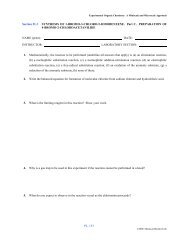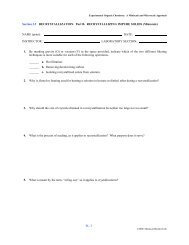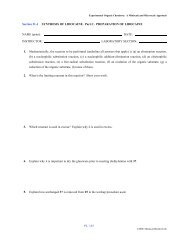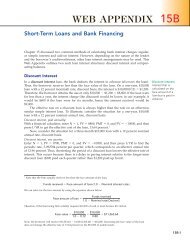PL. 83 Section 14.4 PREPARATION OF 1-BROMOBUTANE NAME ...
PL. 83 Section 14.4 PREPARATION OF 1-BROMOBUTANE NAME ...
PL. 83 Section 14.4 PREPARATION OF 1-BROMOBUTANE NAME ...
Create successful ePaper yourself
Turn your PDF publications into a flip-book with our unique Google optimized e-Paper software.
Experimental Organic Chemistry: A Miniscale and Microscale Approach<strong>Section</strong> <strong>14.4</strong><strong>PREPARATION</strong> <strong>OF</strong> 1-<strong>BROMOBUTANE</strong><strong>NAME</strong> (print):INSTRUCTOR:DATE:LABORATORY SECTION:1. Describe the method by which hydrogen bromide is prepared for use in this experiment.2. Determine the limiting reagent for the conversion of 1-butanol to 1-bromobutane and the theoretical yield ofproduct.3. Is this reaction an S N 1 or S N 2 process? How will the mechanism be confirmed experimentally?4. Write the structures of two possible side products that might be formed in this reaction.5. What is the purpose of the following experimental techniques, and where is each used in the preparation?a. heating at reflux.b. simple distillation.<strong>PL</strong>. <strong>83</strong>©2006 Thomson Brooks/Cole
Experimental Organic Chemistry: A Miniscale and Microscale Approach5. (cont.)c. adding anhydrous sodium sulfate.6. List the possible effects of inhaling excessive amounts of 1-butanol.7. The flash points (°C) of 1-butanol and 1-bromobutane are and , respectively.8. What action should you take if 1-butanol gets on your skin?9. Indicate whether the following statement is true (T) or false (F): Water is an appropriate medium forextinguishing fires involving 1-bromobutane.<strong>PL</strong>. 84©2006 Thomson Brooks/Cole


